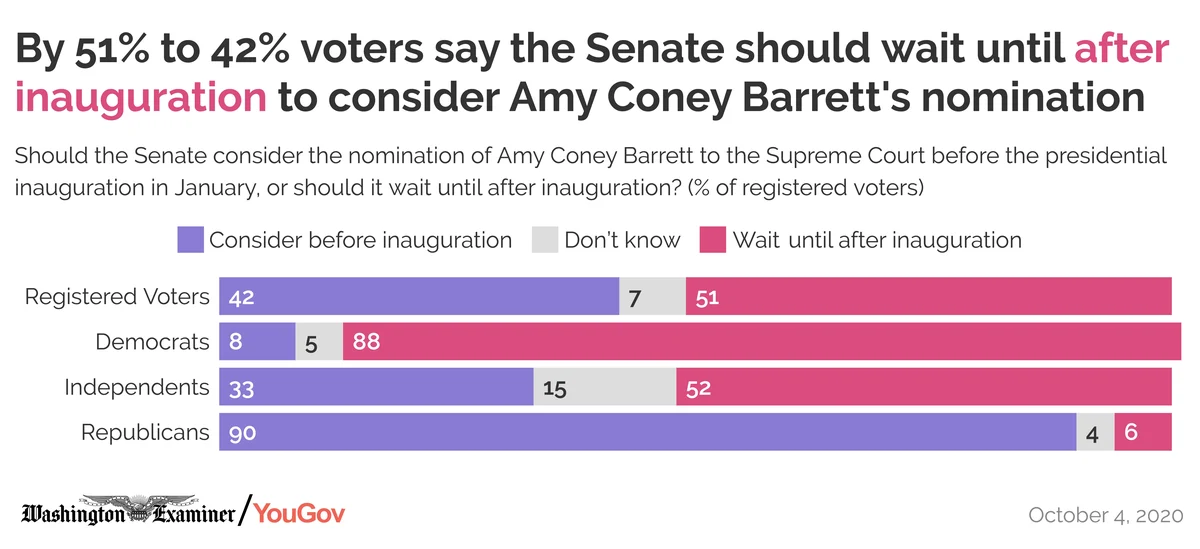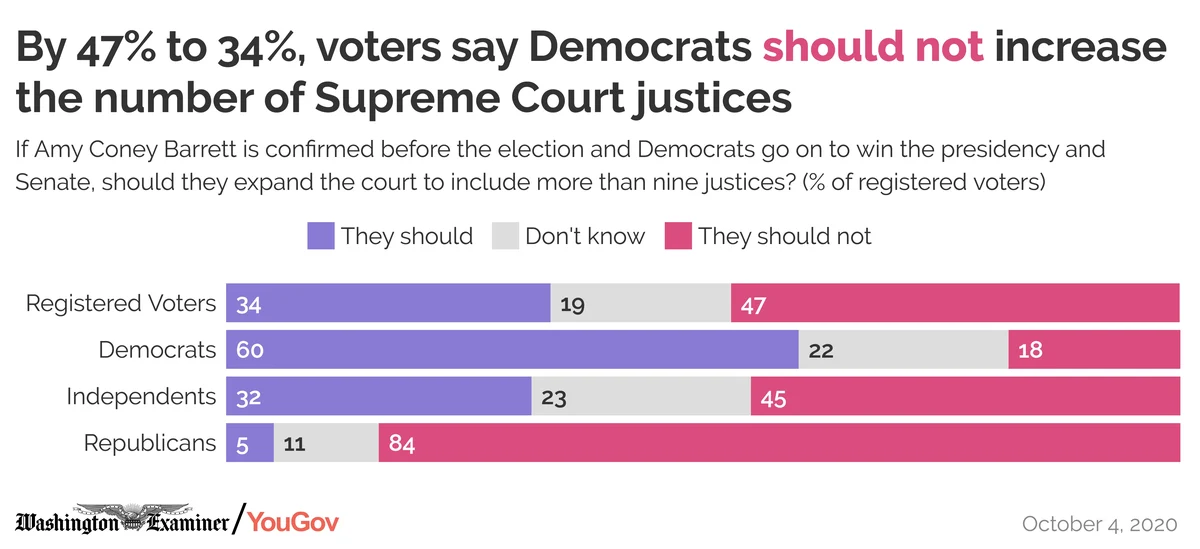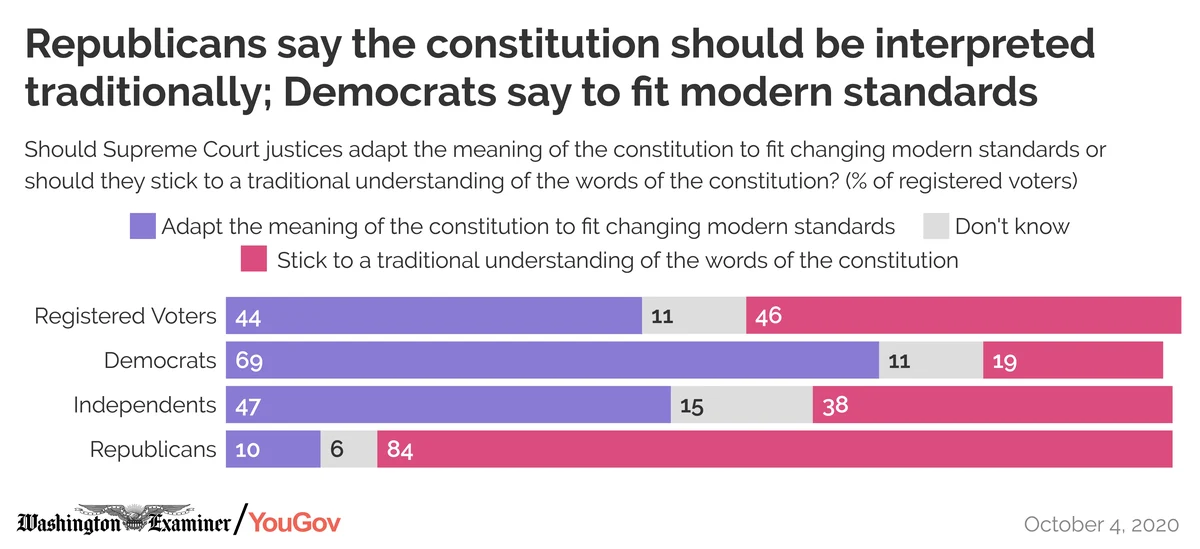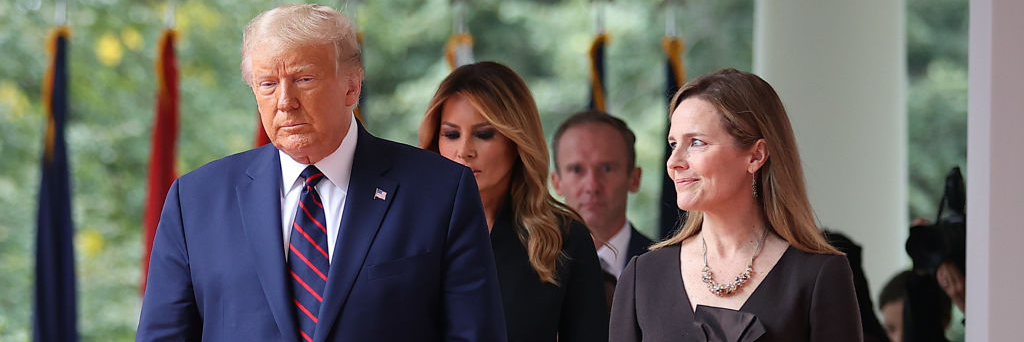Confirmation hearings for President Donald Trump’s Supreme Court nominee, Amy Coney Barrett, are scheduled to begin on Monday with less than a month until the presidential election.
About half of registered voters (51%) say the Senate should not begin considering the nomination of Barrett to the Supreme Court until after the presidential inauguration in January. Just two in five (42%) voters say the consideration should happen before the presidential swearing-in ceremony, which could grant President Trump a second term or see Democratic presidential nominee Joe Biden elevated to the White House.

There has been much speculation that, should Barrett be confirmed by Republicans before inauguration and Democrats subsequently win the presidency and Senate, the Democrats would indulge in some “court packing” - that is to say, increasing the size of the Supreme Court and installing justices they favor in the new positions. Such a tactic could be used to swing the balance of ideology on the court from conservative to liberal.
A Washington Examiner/YouGov Poll shows that, by 47% to 34%, registered voters think that – should Trump manage to get his nominee confirmed and Democrats win the presidency and Senate in November - the Democrats should nevertheless refrain from altering the court. Most Democrats (60%), however, do want to see the party’s leadership expand the Supreme Court in the event that their party takes the Senate and the White House. Only 18% would leave the current number of justices at nine.
By contrast, the overwhelming majority of Republicans (84%), as well as a plurality of Independents (45%), do not want the court packed by Democrats if they win in November.

While it may be the fear for many conservatives that the Democrats would stuff the court full of liberal justices, this is not the desire of most Democratic voters. In fact, the 60% of Democrats who want to expand the court are split, being composed of 30% who want to have a “balanced” court vs. 27% who want a liberal majority (this figure falling to 16% for those who specifically want a “mostly liberal” or “overwhelmingly liberal” court, as opposed to a “slightly liberal” majority.) The intriguing final 2% of Democrat court-packers want a conservative majority of some sort.
How to interpret the Constitution
The Supreme Court is anticipated to consider several high-profile questions this term including possible challenges to the Affordable Care Act and Roe v. Wade. Registered voters are split on whether the Supreme Court should adapt the meaning of the constitution to fit changing modern standards (44%) or stick to a traditional understanding of the text (46%).
About four in five (84%) Republicans believe in sticking to a traditional understanding of the document, while about seven in 10 Democrats (69%) want the meaning of the constitution to be interpreted in the context of changing modern standards.

See the toplines and crosstabs from this Washington Examiner/YouGov Poll
Methodology: This article is based on a flash poll of 1,200 registered voters surveyed via YouGov Direct on October 4, 2020 between 8:30 a.m. and 12:48 p.m. This YouGov Direct Poll was weighted according to age, gender, race, education, and 2016 presidential vote. The margin of error is ±3.6%
Image: Getty










